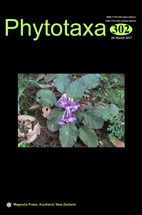Abstract
A phenetic analysis was obtained using numerical taxonomy involving 27 accessories composed of species and varieties of Eriobotrya Lindl. and two related species, Photinia serrulata Lindl., and Rhapiolepis indica Lindl. Principal component analysis (PCA) was used to separate 53 morphological traits. Leaf morphology was essential for the classification of Eriobotrya. Clustering was consistent with traditional taxonomy. Eriobotrya was distinctly separate from its related genera, and when the similarity coefficient was 0.55, the Eriobotrya accessions could be divided into five groups as follows: Group 1: species with small leaf, included E. angustissima Hook. f., E. henryi Nakai, and E. seguinii Cardot ex Guillaumin; Group 2: Species with mid-size and large leaf included E. japonica Lindl., E. malipoensis K.C. Kuan, E. serrata J.E. Vidal, and E. stipularis Craib; Group 3: Species with large leaf distributed in tropical and south subtropical areas, E. elliptica Lindl., E. ellliptica f. peniolata Hook., and E. elliptica var. petelottii Vidal; Group 4: Species with tomentose leaves included E. prinoides Rehder & E.H. Wilson, E.× daduheensis H.Z. Zhang ex W.B. Liao, Q. Fan & M.Y. Ding, E. prinoides var. laotica Vidal, E. salwinensis Hand.-Mass., and E. tengyuehensis W.W. Smith; Group 5: All the remaining species including E. bengalensis Hook. f. bengalensis, E. bengalensis (Roxb.) Hook. f. forma angustifolia (Card.) Vidal E. cavaleriei Rehder, E deflexa Nakai, E. deflexa f. buisanensis Nakia, E. deflexa f. koshunensis, E. fragrans Champ. ex Benth., E. kwangsiensis, E. obovata, and E. potlanei Vidal. Our results were in total agreement with the traditional taxonomy of Eriobotrya classification and provide a foundation for the classification and genetic improvement of loquat germplasm.

